Introduction
With the XF 16-80/4 R OIS WR Fujifilm offers a general purpose standard zoom that covers the popular range of 24 to 120 mm (FF equivalent). It offers a moderate but constant f/4 aperture throughout the whole zoom range. With this lens, Fujifilm fills a gap that existed before, even though they offered several standard zoom lenses already. The only other long zoom range lens was the XF 18-135, but many prefer standard zooms offering a wider image angle at the low end.
Before the XF 16-80 was announced in summer 2019 (yes, this review took a while, sorry for that), the available choices of standard zooms starting at 16mm were limited to the large and heavy (and expensive) XF 16-55/2.8 on one end and the cheapish plastic mount XC zooms on the other with nothing in between.
Combining the large and attractive zoom range with the constant aperture, weather sealing and OIS makes this lens an obvious candidate for a single lens solution to buy with a new camera. Or a temptation to upgrade from the XF 18-55 kit zoom you may have bought in the past.
Let’s have a look at how the lens performs on the 26 MP sensor of our current review camera, the X-T30.
The build quality of the lens is quite high. The lens body consists of a combination of high quality plastic and metal parts, based on a metal mount. The lens is a bit bigger and heavier than the typical kit zooms, but not as bulky as the XF 16-55/2.8, for example. It balances well even on the smallish X-T30 used for the review.
Regarding lens controls, there is is an aperture ring with marked f-stops and an “A” setting, the broad rubberized and nicely damped zoom ring, the focus ring… and that’s about it. Other switches you might expect on the lens are missing, so selecting manual or autofocus needs to happen on the camera and the OIS function can only be enabled or disabled in the camera menu.
As the ‘WR’ in the lens name indicates, it is sealed against moisture and dust. As you can see in the image below, it’s a monocam design, so the inner lens tube extends significantly with longer focal lengths. A plastic petal-shaped lens hood is supplied with the lens.

Typical for all X-mount lenses, the focus ring works ‘by wire’, so is not mechanically coupled to the focus group. Thanks to a modern stepping motor, autofocus is very fast and silent. The lens focuses down to 0.35m throughout the whole zoom range, resulting in a magnification ratio of 0.25 at the longest focal length. That’s not large enough for real macro photography, but certainly welcome for occasional close-up shots of small objects.
Fujifilm claims the latest generation OIS in this lens allows for up to 6 stops longer shutter times. As usual, one should take these manufacturer promises with a grain of salt and the actual results will of course be slightly different for each individual photographer. If you’re over-caffeinated or quit smoking just three days ago, you might not quite see that much improvement. However, in the field the OIS did in fact feel more effective than implementations in earlier Fujifilm lenses.
| Specifications | |
|---|---|
| Equiv. focal length | “24-122 mm” (full format equivalent) |
| Equiv. aperture | “f/6” (full format equivalent, in terms of depth-of-field) |
| Optical construction | 16 elements in 12 groups, including 3 aspherical and 1 ED aspherical elements |
| Number of aperture blades | 9 (rounded) |
| min. focus distance | 0.35 m (max. magnification ratio 1:4) |
| Dimensions | 78.3 × 88.9 mm |
| Weight | 440g |
| Filter size | 72 mm |
| Hood | petal-shaped (bayonet mount, supplied) |
| Other features | Optical Image Stabilizer, weather-sealing |
Distortion
Fujifilm applies software correction to many X-mount lenses, including this one. This typically leads to images with rather low to almost unnoticeable distortion. Throughout the whole zoom range, the distortion after correction is always of the pincushion type, a bit higher than one would expect at the wide end, slowly decreasing to really low numbers with longer focal lengths.
Because the correction can not be switched off in-camera, this is what you’ll get when you shoot JPGs, and of course also what you’ll always see in the viewfinder or on the rear display (before, during and after shooting).
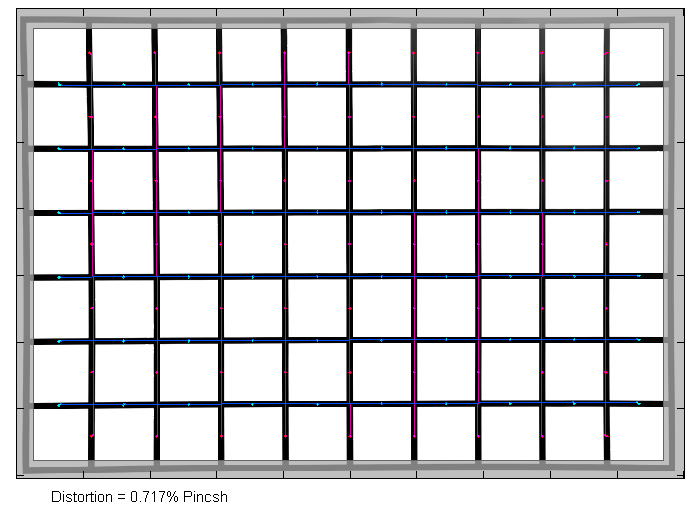
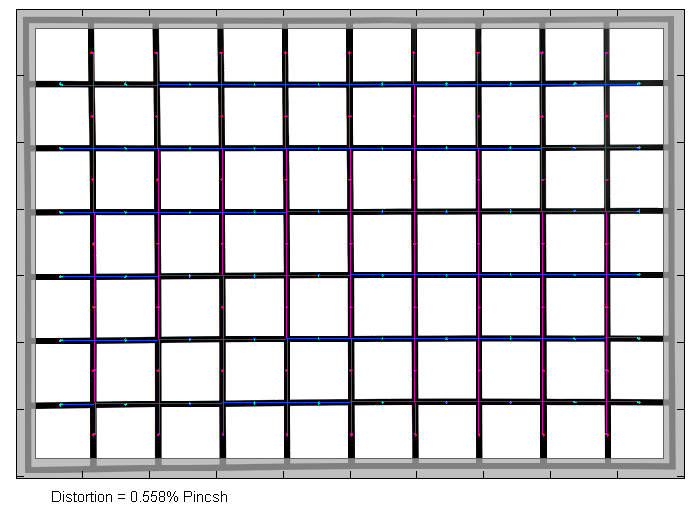

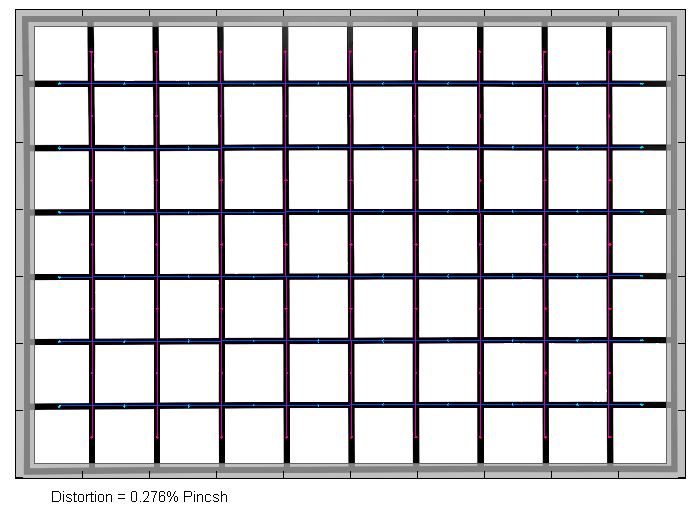

Several RAW converters allow turning software correction off, so shooting RAW reveals the native distortion characteristics of the lens. And that’s unfortunately a very different story than what’s visible in the viewfinder.
At 16mm, there is a lot of barrel distortion. It’s not the worst we have seen in a zoom lens, but it’s not far from it and we have definitely seen better many times. At 23mm, distortion has already flipped over to pincushion style, very moderate, though. With higher focal lengths, the amount of pincushion distortion increases significantly.
It’s important to keep in mind that distortion correction, especially correction of barrel distortion, comes at a price. It takes away some image angle, so the lens is actually a bit wider than what you see in the (corrected) viewfinder. In addition, it comes at the expense of some resolution loss especially in the image corners (we’ll have a closer look at this below). In that context it’s slightly surprising that Fujifilm actually over-corrects the distortion at 16mm.
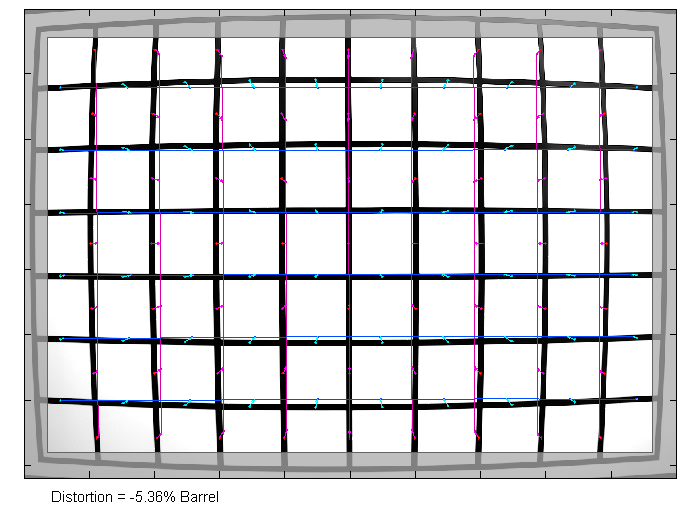


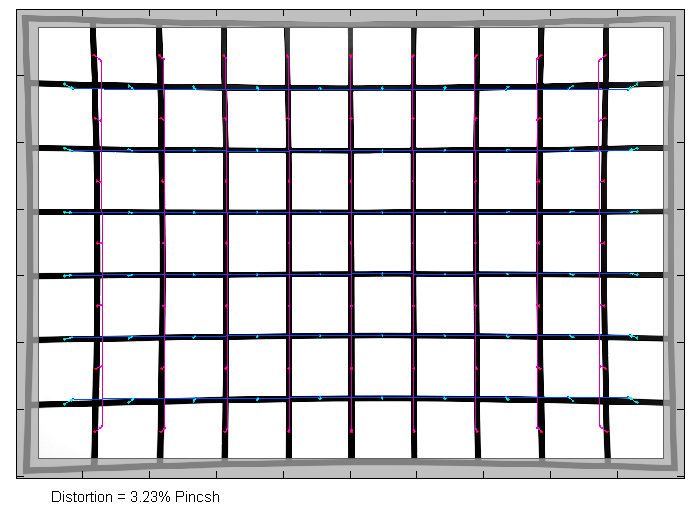

Vignetting
Just as distortion, vignetting is auto-corrected, too. Even with that correction, the amount of light falloff is a bit on the high side at the largest aperture settings on both ends of the zoom range. As usual, stopping down reduces vignetting to lower levels and for medium and small apertures it should not be an issue for most subjects.
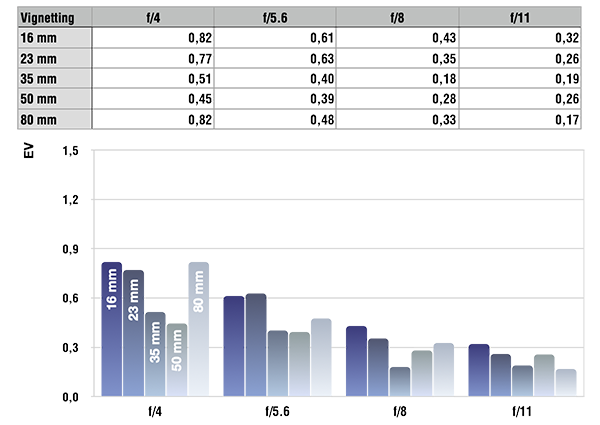
Again, switching off correction reveals a less than exciting native performance of the lens. Especially at both ends of the zoom range, vignetting is very high wide open. At 16mm, it remains quite high even when stopped down considerably.
Even though vignetting is easy to correct, the correction comes at a cost again. In this case it’s the risk of increased (and possibly very visible) noise at the image corners, especially at high ISO numbers.
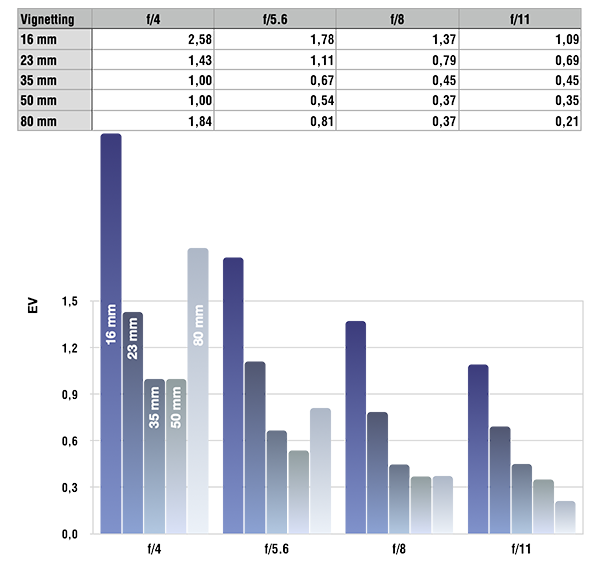
MTF (resolution)
The resolution characteristics of the XF 16-80 are a mixed bag. The center and near center performance is generally very good to excellent at the wide end, while a bit lower but still very good in the tele range.
The border and corner performance is a different story, though. At 16mm, borders are good, but corners just fair wide open. Stopping down helps to lift them to a good level, too.
At 23mm and 35mm, borders and corners show good resolution, stopped down even on the edge of very good. In fact, slightly stopped down at 23mm looks like the sweet spot of the lens.
At 50mm, the borders and corners show a somewhat strange and rare but not unprecedented behaviour. By stopping down from f/4 to f/5.6, the resolution drops from the initial level and then recovers to higher values at f/8 and f/11.
The biggest disappointment is the resolution at the longest focal length. The borders are fair, but the corners remain on a poor level, regardless of the aperture chosen.
Please note that the MTF results are not directly comparable across the different systems!
Below is a simplified summary of the formal findings. The chart shows line widths per picture height (LW/PH) which can be taken as a measure for sharpness. If you want to know more about the MTF50 figures you may check out the corresponding Imatest Explanations

The results above where measured with all software corrections turned off, so show the native performance of the lens. Because of the high amount of distortion that is usually auto-corrected, or which you may want to correct anyway if you shoot RAW, we also had a look at the MTF values with distortion correction enabled.
In the charts below you can see that correcting the barrel distortion at 16mm has only little effect in most of the frame, but takes away roughly 10% of resolution in the image borders.
At 23mm the results are very similar, because only a very small amount of correction happens here.
Correcting strong pincushion distortion is less harmful to the resolution results, actually the borders even improve a tiny bit that way.

Chromatic Aberrations (CAs)
Lateral CAs (color shadows in the outer image field) are generally low to moderate at f/4 with a tendency to increase by stopping down, most obvious at the short focal lenghts. The only exception is 80mm, where CAs are a bit pronounced at f/4 already and stay more or less on the same level regardless of the aperture chosen.

Bokeh
A standard zoom with moderate aperture, the full-frame equivalent of f/6 in this case, is not the kind of lens you’d typically pick to shoot portraits or other images where you want to isolate the main subject from the background. Still, given the right combination of focal length (possibly long), aperture (large) and subject to background distance (far) you can still achieve a decent amount of background blur with this lens, too. So, let’s have a look at the bokeh quality.
Out-of-focus highlights show some amount of outlining on the edges plus some onion-ring shapes on the inside. However, they remain nicely circular even at small apertures thanks to the 9 rounded aperture blades of the lens.

The shape of the highlights deteriorates a bit towards the image borders due to mechanical vignetting at f/4. However, stopping down solves that issue. Again, one can see the onion-ring shapes on the inside of highlight discs, but also the round and circular shape even when stopped down to f/11.

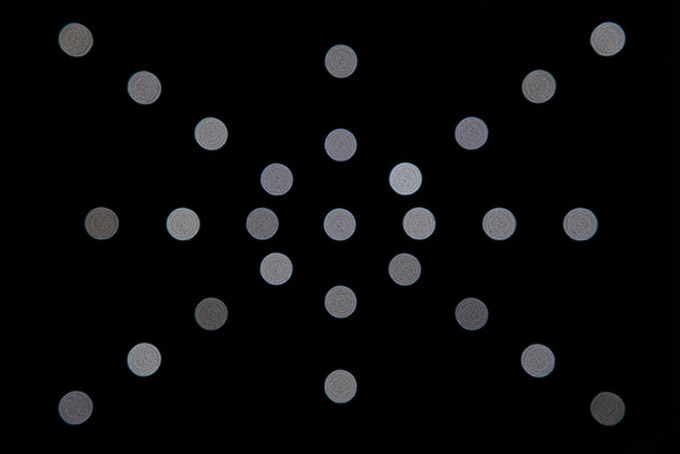
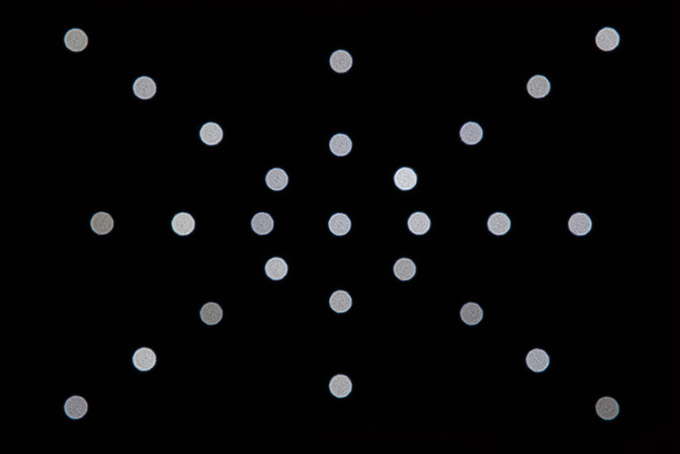
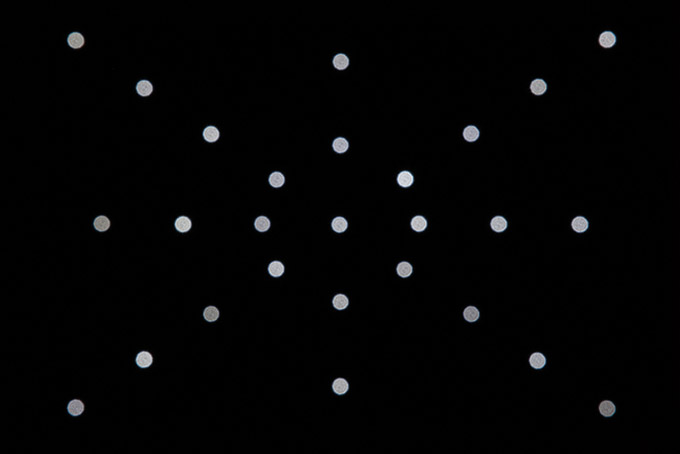
The general rendition in the focus transition zones is quite smooth (for a standard zoom) in the background (to the left below) and a bit more nervous in the foreground (to the right below).

The analysis above was done at 80mm, because the longest focal length is the easiest to get some background blur. As with many zoom lenses, the bokeh quality varies a bit with the length. You can get an impression of the bokeh for the lower zoom range in some of the sample images on the next page. In general though, while the absolute bokeh quality is not outstanding, it is fairly ok and above average for a standard zoom.
Sample Images
Let's be honest: this is not a lens you'd consider buying because of its outstanding optical performance. Standard zoom lenses are often a challenge to engineer, because they need to combine partially contradicting design goals into a single product. As a result, they are typically full of compromises, which from an end-user's perspective means they come with what is often perceived as restrictions, limitations, issues or even flaws. The Fujinon XF 16-80mm f/4 R OIS WR certainly comes with a few compromises of that kind.
Let's start with the good news: the build quality of the lens is high, despite its extending monocam design and some plastic parts it feels solid and sturdy. The stepping motor provides fast and silent autofocus and the latest generation OIS is impressive. On top, the lens features sealing agains dust and moisture, so should be a reliable travel companion for most environments. Except for the focus, zoom and aperture rings there are no controls on the lens body. Focus mode and OIS can and need to be set via the camera, but a dedicated OIS switch on the lens would come handy occasionally.
With very good to excellent resolution, sharpness is not an issue in the image center. But depending on the focal length, it can be at the image borders and corners. The fact that Fujifilm relies on correcting heavy distortion and vignetting by software instead of optical engineering doesn't help in this regard, which is especially shown by the border resolution at 16mm. At 80mm, the border and especially corner resolution is so low that it feels like Fujifilm maybe stretched the zoom range of the lens a tad too far.
On a more positive note, the bokeh quality is not outstanding, but certainly above average for a standard zoom.
So, if you're in the market for a new standard zoom, the question you need to answer yourself is not "is it stellar?". Because, quite obviously, it's not. But there is currently no other lens for X-mount that combines this particular zoom range with the same feature set and build quailty. So, if the lens specs match your wish list on paper, the actual question is: "will it, with all its compromises, still be good enough for what I want to use it for?". There are too many individual use cases to give a clear answer to that, but if in doubt, the facts published in this and other reviews hopefully can give some guidance in making that decision.
-
Optical Quality
-
Build Quality
-
Price / Performance


